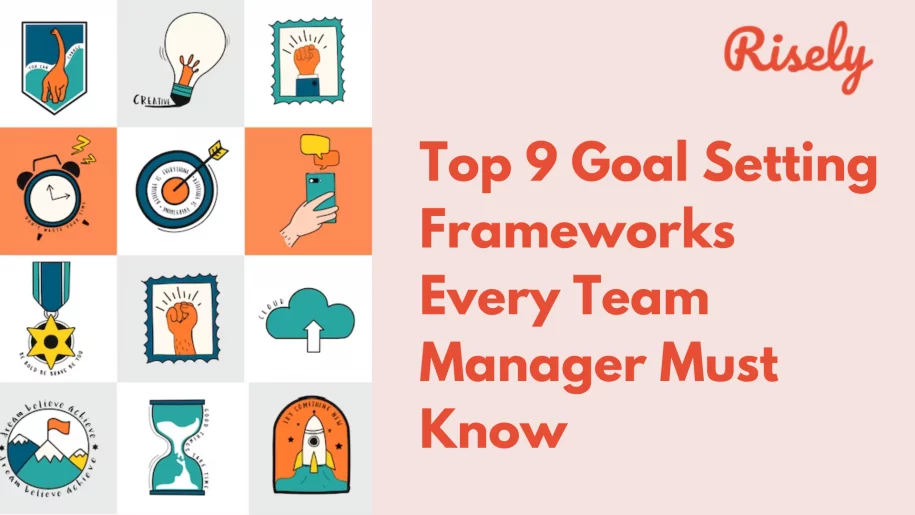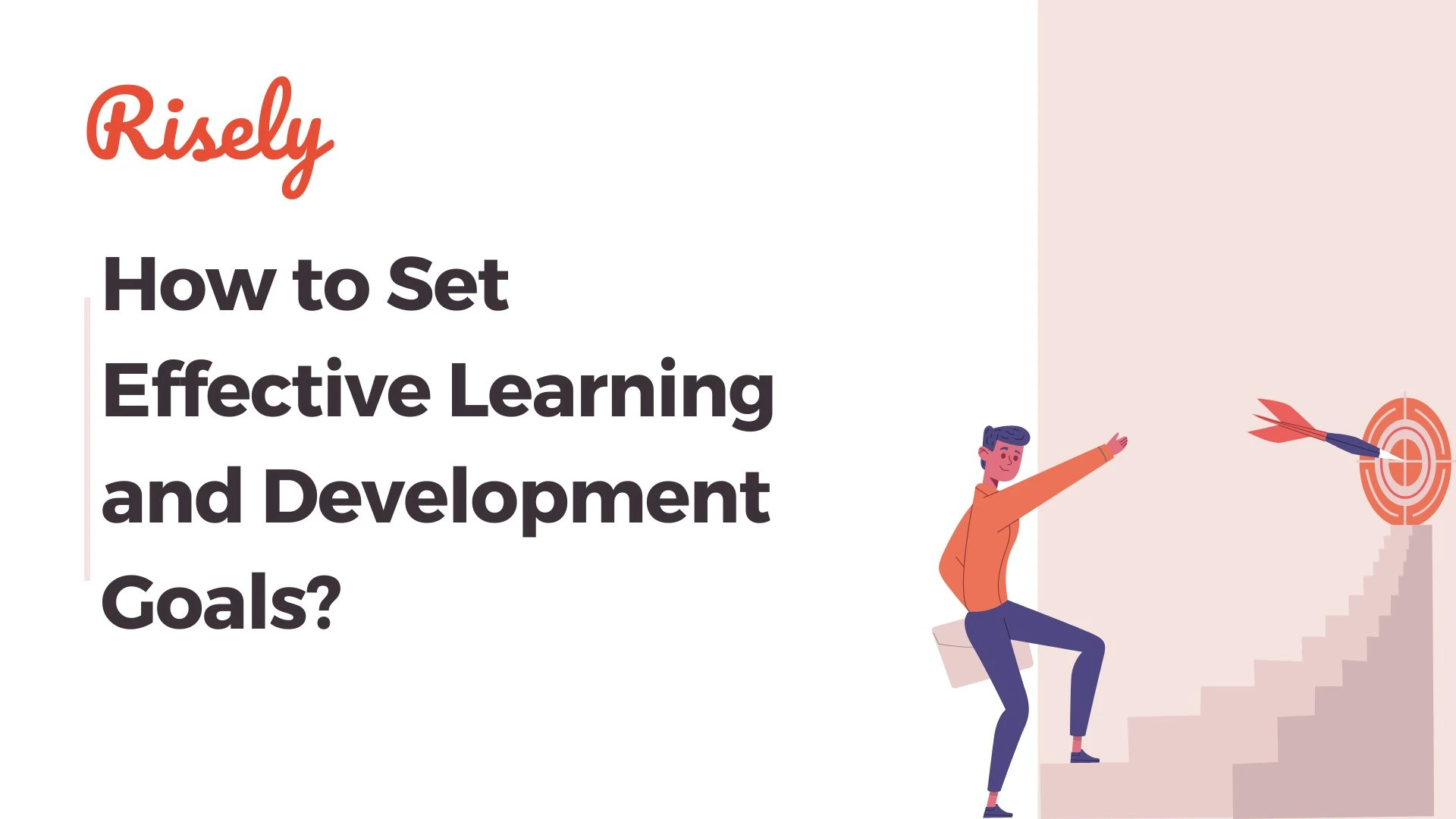Top 9 Goal-Setting Frameworks Every Team Manager Must Know
In goal setting, a goal-setting framework is a method by which goals are formed and measured to ensure progress. Most of the time, teams must develop plans properly and meet their goals. With time, progress gets lost and people get frustrated. It can also become a big problem when the team members lose faith in their strategic goals. To ensure goals are successful, goal-setting frameworks form the basis of goal-setting activities in teams. Over the years, goal-setting frameworks have evolved to offer teams more clarity on setting challenging yet achievable goals. This blog post will provide you with a list of goal-setting frameworks for managers to choose from based on their specific needs and preferences, along with key points to remember. So let’s get started!What are goal-setting frameworks?
As the name suggests, goal-setting frameworks are structured approaches for setting goals to increase the likelihood of success. These frameworks include a list of goals that need to be achieved by a specific time frame and critical milestones to guide employees toward achieving the goals. The key advantage of goal-setting frameworks is that they provide teams with a common direction to work toward strategic goals. They also help managers develop specific and measurable goals that can lead to personal and collective success at work.Top goal-setting frameworks managers need to know
HARD goals
HARD goals involve challenging and motivating the team to achieve excellent performance. While the SMART goal-setting framework is the most popular, several experts have noted its inability to get people moving. As a result, the concept of HARD goals came with Mark Murphy’s book titled Hard Goals. The acronym HARD stands for heartfelt, animated, required, and difficult – suggesting the nature of activities set as goals under this framework. HARD goals are a great tool for setting the direction of the team or an individual team member, as it leads to introspection and makes a person rethink their ideas. The process of setting HARD goals goes along with seeking answers to four key questions that cover all four key aspects. It is an excellent method as it makes typical goal-setting conversations more exciting and engaging for all the parties involved. Learn more about HARD goals here!SMART goals
SMART goals are specific, measurable, attainable, relevant, and time-bound. They help clarify goals and focus efforts by specifying the goal in detail and setting clear objectives. SMART goals should be specific and measurable with steps to achieve them. In addition, they are realistic and reliable so that progress can be easily tracked. Instead of result-oriented goals, SMART goals are result-focused, as they specify the goal in terms of achieving a particular result or result range. By setting specific, measurable goals with challenging but achievable steps, SMART goals help teams to track progress and evaluate achievements over time. In addition, by focusing on results over time, SMART goals help teams stay motivated and inspired to improve and achieve success continuously. Due to their numerous benefits, the SMART goal framework is among the most popular ideas used by managers globally. Read more about SMART goals and find examples of smart goals here.Other Interesting Reads
MBO
MBO is a goal-setting framework Peter Drucker popularized in the 1950s with his book. It involves setting specific, measurable goals for individuals or teams and then regularly reviewing progress and providing feedback. MBO goals are typically focused on medium to short-term goals, with particular attention to the team’s objectives and developing a cohesive plan surrounding that. The goals set under MBOs are mutually agreed upon by the manager and their teams, allowing space for the exchange of feedback and ideas at the beginning of the process. The process starts by identifying the objectives for the team. The manager further shares responsibilities and ensures support and motivation throughout the process. While it is a great way to build healthy competition and keep teams running, it can create challenges for teams too. You can learn more about MBOs here.Other Interesting Reads
WOOP goals
WOOP goals are one interesting goal-setting framework that teams can use to set and achieve goals. WOOP goals consist of Wish, Outcome, Obstacle, and Plan. Wish is the goal that one wishes to achieve. The outcome results from achieving the goal, such as increased sales or improved productivity. The obstacle is the challenge that stands in the way of achieving the goal; it may be financial challenges or team issues. Finally, Plan is a step-by-step plan to overcome obstacles and achieve one’s goal. To use WOOP goals effectively, one must first wish for a goal that motivates and excites them. Imagining the outcome of the goal in detail is an essential part of the process. By identifying key challenges and removing them, teams can maximize their chances of success and reach their goals. In addition to bringing benefits to the team, WOOP goals are a great goal-setting framework for professional development goals for managers as well. Jump here to keep reading more about WOOP goals.Micro goals
Micro goals are short-term goals designed to help you progress toward a larger goal. They guide you through the small steps that lead to the outcome. Instead of focusing on the main goal, micro goals should be ambitious yet achievable and should focus on the process rather than the end result. For example, a micro goal could be to complete one specific task within a larger goal, such as delivering a presentation in one step rather than several steps leading to the final approval of new project approval. Managers can use micro goals to break down more significant issues into smaller tasks and milestones to ensure progress is tracked. They sound like the best way to guide new team members through challenges. You can read more about micro goals here.One Word goals
One-word goal setting is a popular goal-setting framework that focuses on one word to achieve a roundabout goal. Such goals are often challenging but can be inspiring and motivating. One-word goals can be challenging to achieve, yet they often act as the guiding light for numerous challenges that a team faces. One-word goals are not the matter’s end but kick-start the team’s operations. They are defined as a team’s guiding philosophy or ultimate aim for a long time. All the ideas and visions for the team are condensed into this one term from which all else flows. For example, a one-word goal for a manager can be productivity. All their actions would be designed around achieving productivity in the workplace and with their team everywhere. To know more about one-word goals, continue reading here.The Golden Circle
The Golden Circle goal-setting framework is a valuable framework for goal setting that managers can apply to team goals, personal goals, and any other objective or goal-related situation. It consists of three circles: Why, How, and What. The Why circle represents the purpose of the goal or objective and forms the core of the concentric circle. In goal-setting situations, the Why circle is often the most difficult to address effectively; it is challenging to pin down one specific goal when so many different plans are possible. Instead, the Why circle should focus on the team’s larger goals, bringing everyone together and offering a sense of purpose. The How circle represents the processes required to achieve the goal. It includes identifying key activities that need to be completed to reach the goal. Lastly, the What circle represents the outcomes the team wants to create with this process. It is an excellent way for new teams to figure out their philosophy. How do I do it? Read more about the Golden Circle here.OKRs
OKRs are a goal-setting framework developed in the 1970s and popularized by Andrew Grove and John Doerr. It involves setting an objective and defining key results that will indicate success. OKRs can help teams stretch and focus on critical areas to achieve dramatic results. They are an effective way to set ambitious goals and drive alignment within a company. OKRs help to ensure that objectives are consistently and constantly met and that critical results are continuously tracked and reported. In addition, by using OKRs, teams can improve their decision-making by providing that they know exactly who is responsible for what part of the activity. Read more about OKRs here.BHAG
BHAG is a goal-setting framework developed by Jim Collins and Jerry I. Porras that focuses on ambitious, realistic goals. This framework helps to create goals that will result in measurable progress and success. The critical aspects of the BHAG framework include setting a goal, defining key results to be achieved, measuring progress toward the goal, and resetting the goal if necessary. BHAG can help teams focus their resources on important objectives while achieving tangible results. Teams can increase motivation and innovation among their team members by developing an audacious goal. The acronym BHAG stands for Big, Hairy, and Audacious Goal – denoting a massive goal that might require an overwhelming amount of commitment from the team. Learn more about the BHAG goal-setting framework here.Goal Pyramid
A goal pyramid is a way to visually organize long-term goals and smaller milestones in a result-oriented plan. The goal pyramid is structured so that the primary goal is at the top of it, and long-term goals are positioned beneath it. At the bottom of the goal pyramid are daily tasks required to support the mission-level objectives. The goal pyramid helps a team stay on track with its goals and focus on the bigger picture. In addition, it provides a clear view of the goals, tasks, and sub-tasks required to accomplish them. In addition to helping a team stay focused on its goals, a goal pyramid also shows how different goals work together to achieve the ultimate objective. For example, one goal within the goal pyramid may focus on increasing sales, while another may focus on reducing costs. Linking these goals to tasks and sub-tasks makes it easier for teams to stay organized and on track with their objectives. Find our more about goal pyramids here.Conclusion
Setting goals and constantly working to achieve them is the key to success. It’s an objective-setting framework that helps you prioritize goals in order to reach them and stay on track. While goal-setting frameworks are sometimes complex tools, they can help you organize plans and brainstorm innovative ideas for setting goals. If you’re a team manager who wants to set goals, this goal-setting frameworks blog can help you develop brilliant ideas for setting goals that your team members will love.Have you picked the right goal-setting framework for your team?
Test what’s working and what’s not in just a few minutes with a free assessment from Risely
Other Related Blogs
How to Set Effective Learning and Development Goals?
This blog highlights how effective learning and development goals are set, why is setting them important for your organization and what challenges you might face during this process. … Read…
Are you on track to meet your Q1 goals?
Are you on track to meet your Q1 goals? We are in the middle of the first quarter of 2024. Seems hard to believe. It surely is! ⏰ Time has…
5 Secrets Of Solid Goal Setting At Work You Can’t Miss
5 Secrets Of Solid Goal Setting At Work You Can’t Miss “I don’t focus on what I’m up against. I focus on my goals and I try to ignore the…
Understanding the world of Goal Setting Coach to reach new heights
Understanding the world of Goal Setting Coach to reach new heights Setting and achieving goals is essential for personal and organizational success in today’s fast-paced and competitive work environment. However,…


